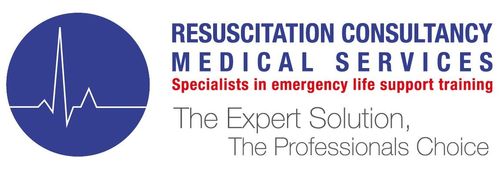Why a Mask Fit Test is needed?
To ensure that the chosen RPE will provide the desired protection, a facepiece fit testing is required. The RPE should be matched correctly and appropriately to the individual and the job, taking into account the airborne contaminant. Fit-testing will help ensure that the equipment selected is suitable for the wearer.
RCMS concentrates on fit testing for healthcare personnel in light of the Coronavirus pandemic and beyond. Our aim is to allow the healthcare profession to be able to function appropriately avoiding the lack of facepiece fit testers to be a limiting factor in healthcare provision. Based in the healthcare sector, our staff have detailed knowledge of PPE and infection control. There are many reasons, other than infection prevention and control, why RPE may be required in the workplace.
Frequently Asked Questions
Face fit testing is a method used to ensure that a respirator fits the wearer correctly and provides adequate protection against hazardous airborne particles. The test is performed by one of our trained professionals and involves fitting the respirator on the wearer’s face and assessing the seal. The test can be done using either a quantitative or a qualitative method.
Quantitative face fit testing is an objective method that measures the amount of leakage that occurs around the seal of the respirator. This method is often used for full-face respirators and involves the use of specialised equipment to measure the amount of leakage around the face seal. The results are then compared to a pass/fail criteria to determine if the respirator is fitting properly.
Qualitative face fit testing is a subjective method that relies on the wearer’s sense of taste or smell to determine if the respirator is fitting properly. This method is often used for half-mask respirators and involves the wearer donning the respirator and then being exposed to a test agent such as saccharin or Bitrex. If the wearer can taste or smell the test agent, then the respirator is not fitting properly.
Employers are required to provide respiratory protective equipment to their employees when there is a risk of exposure to hazardous airborne particles. Face fit testing is required by law to ensure that the respirator fits properly and provides adequate protection. It is also required whenever there is a change in the type or size of respirator used, or if the employee’s facial characteristics change, such as weight gain or loss or facial hair growth.
Properly fitting respiratory protective equipment can provide a significant reduction in the risk of exposure to hazardous airborne particles. Face fit testing ensures that the respirator is fitted correctly and provides adequate protection, giving employees peace of mind and ensuring a safe working environment.
Face fit testing should be performed initially when the respirator is first provided to the employee, and then at least annually thereafter. However, it should also be done whenever there is a change in the type or size of respirator used or if the employee’s facial characteristics change, such as weight gain or loss or facial hair growth.
If the respirator does not fit properly, then it cannot provide adequate protection against hazardous airborne particles. The employee must not be allowed to use the respirator until a suitable replacement is found. Employers must ensure that employees have the appropriate respiratory protective equipment and that it fits properly to provide adequate protection.
Message Us — We’re Here to Help
Simply complete the form below and one of our practising healthcare professionals will be in touch shortly to discuss your training needs or answer any questions you may have.
Contact Details
Whether you’d like to discuss your training requirements, book a course, or get expert advice, our friendly clinical team would love to hear from you.
Phone: 0333 0122 999
Email: info@rcmstraining.co.uk
Resuscitation Consultancy Medical Services Ltd
86 Forest Walk
Buckley, Flintshire
CH7 3AR
Opening Hours:
Monday – Friday: 8:00 am – 7:00 pm
Saturday: 8:00 am – 1:00 pm
Sunday: Closed


